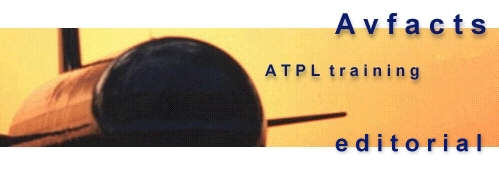| Something can be done to
modify the stall pattern of rearward swept wings, such that they pitch
down at the stall (ie: display positive longitudinal stability).
Washout
This is where the incidence angle at the tips is less than that at
the wing root. A gradual torsional twist in the wing is the result.
The tips no longer reach their stall angle of attack, until other more
inboard sections of the wing do so. Twisting the wing downwards at the
tip has a limit to it, as too much washout may see the outboard
section of the wing provide zero lift, or negative lift at small
overall A of A’s, such as when in the cruise. Refer fig Lift 3.
|
| Leading
edge slat deployment
Another method of attacking the
problem of early tip stalling is to have the outboard sections of the
leading edge devices (LED’s), extend automatically when within
certain A of A/airspeed values. This re-energises the the flow over
the top surface of the wing immediately aft of them, delaying break-up
of streamline flow there until more inboard areas have stalled. It
also improves outboard aileron effectiveness near the stall. |

Fig Lift 3. Washout (exaggerated)
|
Wing fences
These inhibit the flow of air outward
toward the tips, which is called “spanwise flow”. This tends to happen
at high A of A’s and is quite pronounced in swept designs. Spanwise flow
is a factor in producing tip stalling. Effectively, wing fences split the
wing into two sections, inboard of the fence, and outboard of it, isolating
the effects of each part from the other.
| They assist in preventing
spanwise thickening of the boundary layer. At the fence a trailing
vortex is produced that rotates in the opposite direction to usual
wing tip trailing vortex. The vortex produced by the fence scours away
the local boundary layer. Refer fig Lift 4.
The above briefing is a sample from
the ATPL Aerodynamics and Systems course, which will soon be available
via Internet. I hope you found this of value. |

Fig Lift 4.Wing fences.
|
| Ways of
solving wing tip stalling is a typical ATPL, and airline technical
interview question.
Another free ATPL training editorial
will discuss other ways to prevent tip stalling.
Best wishes
Rob Avery
ATPL Lecturer |

Marty says ... "Goodbye to GA".
|










